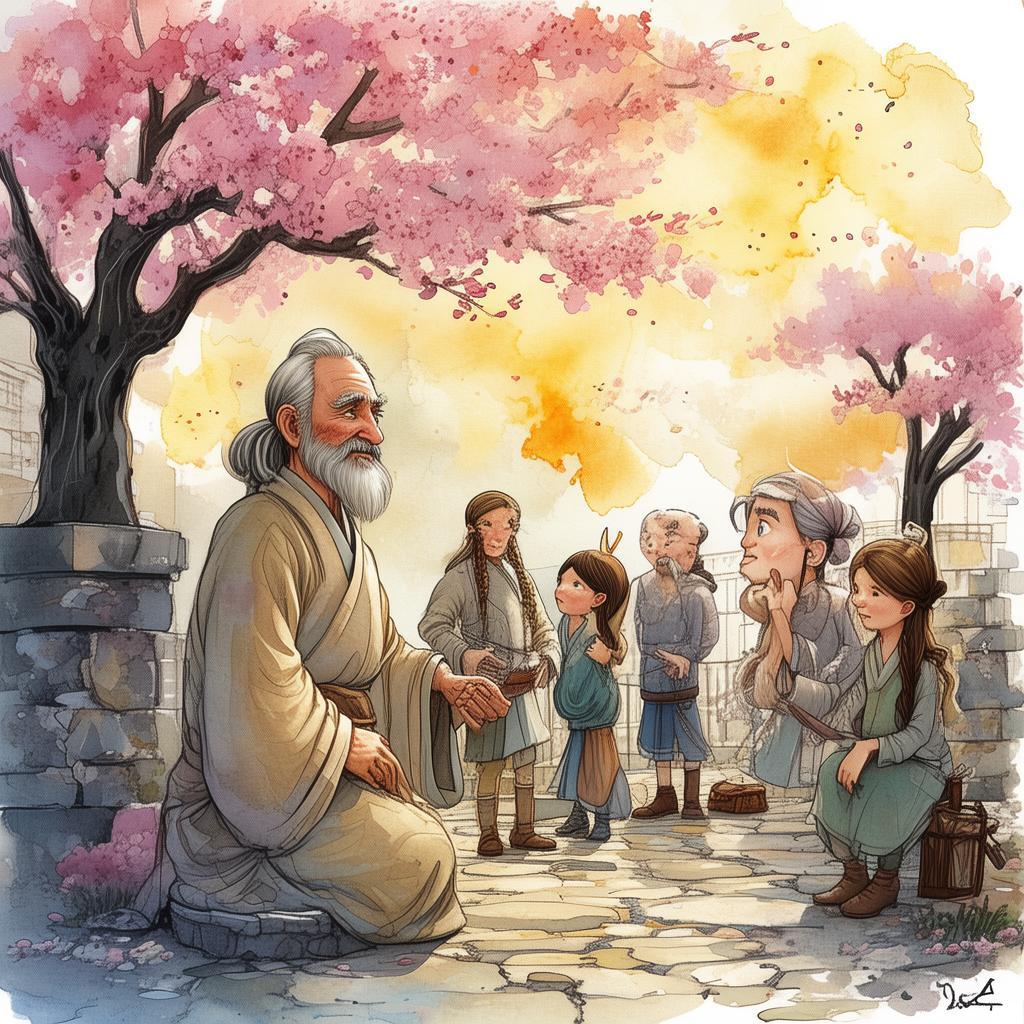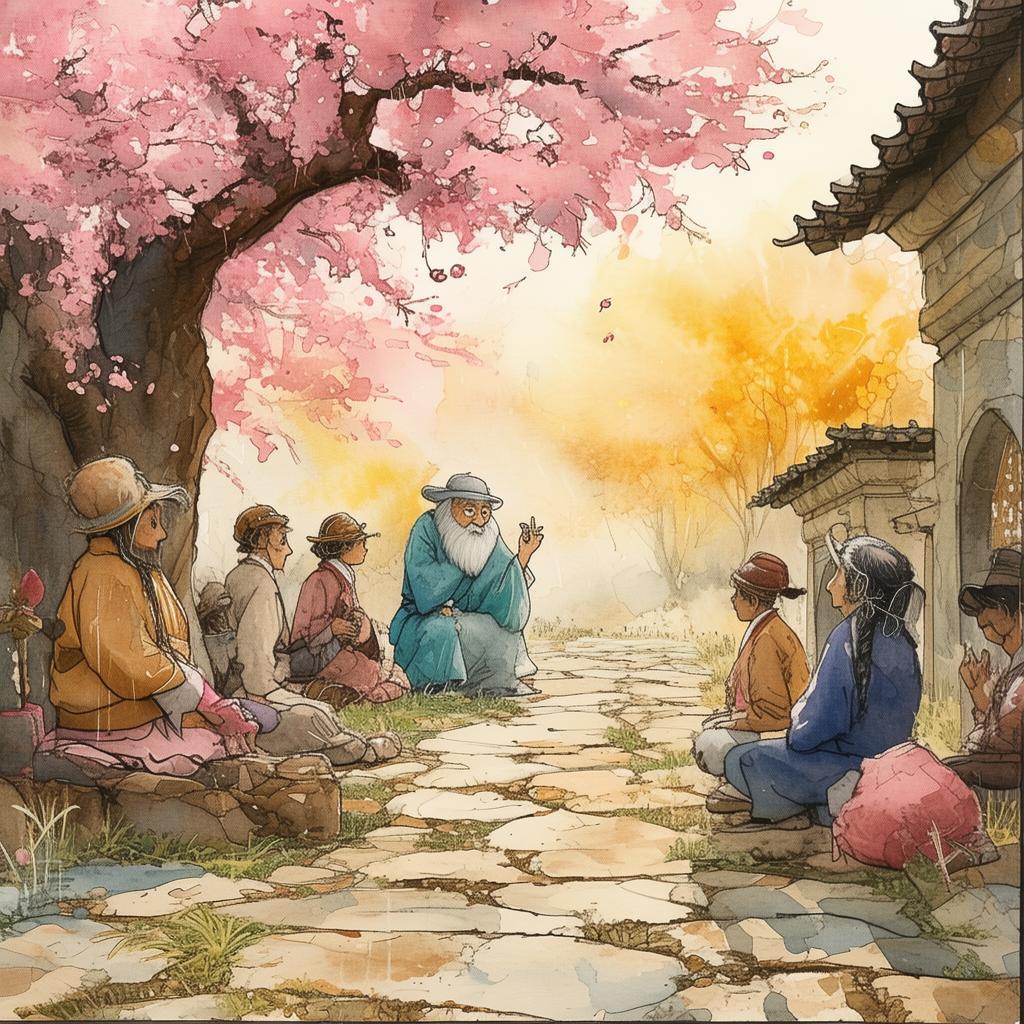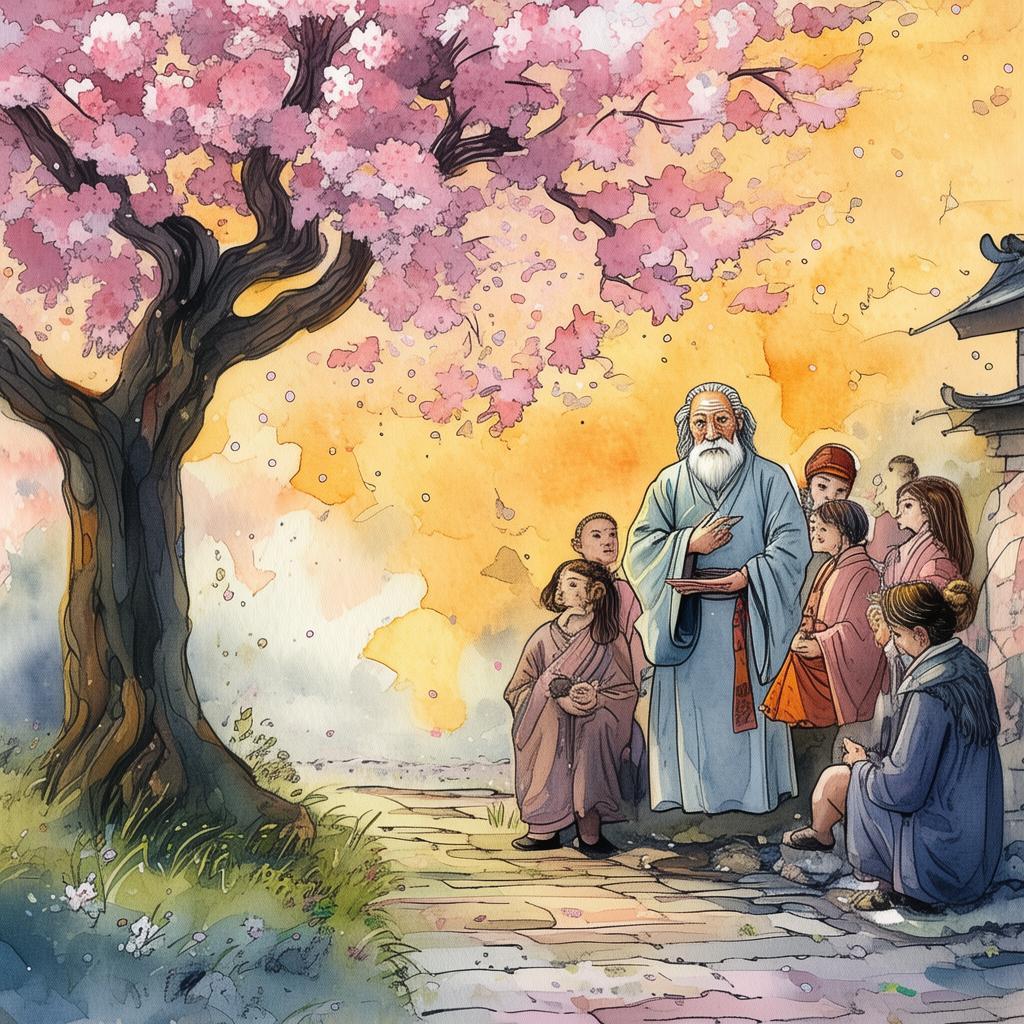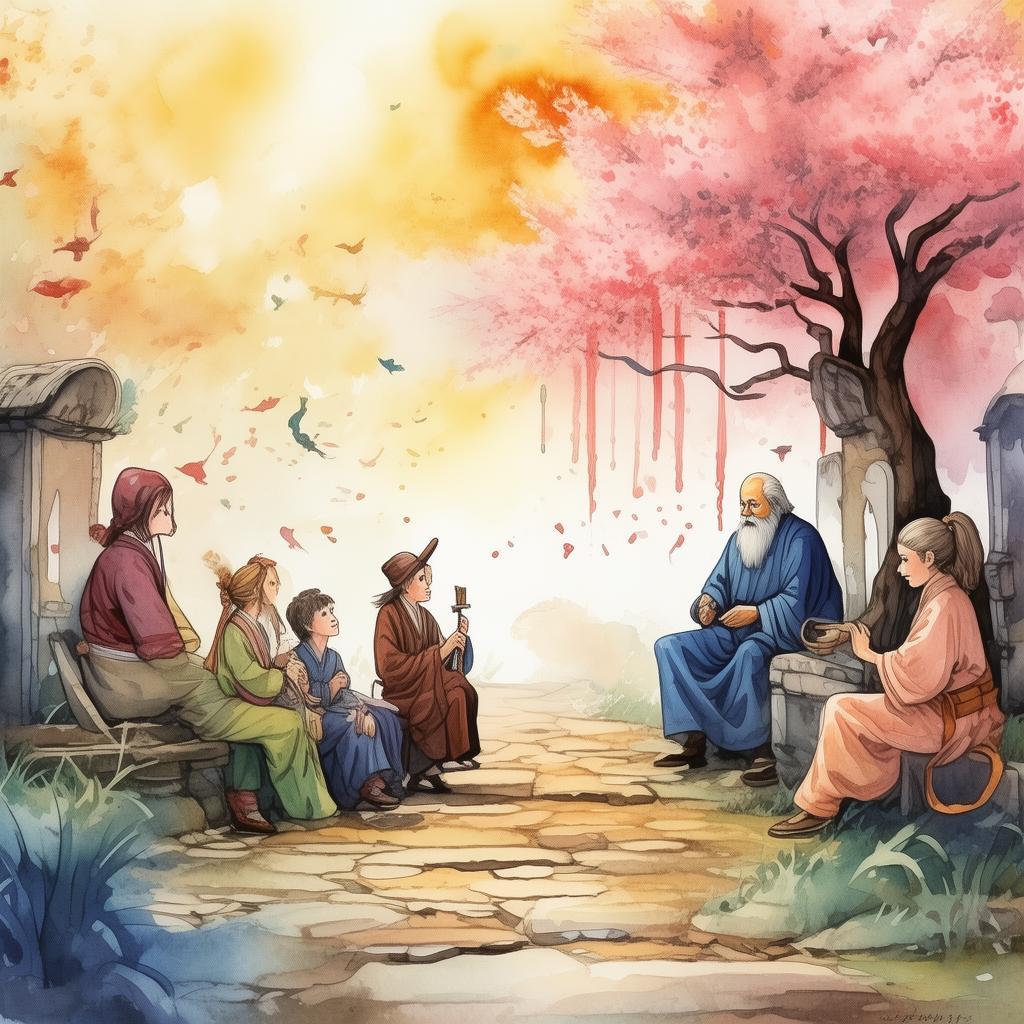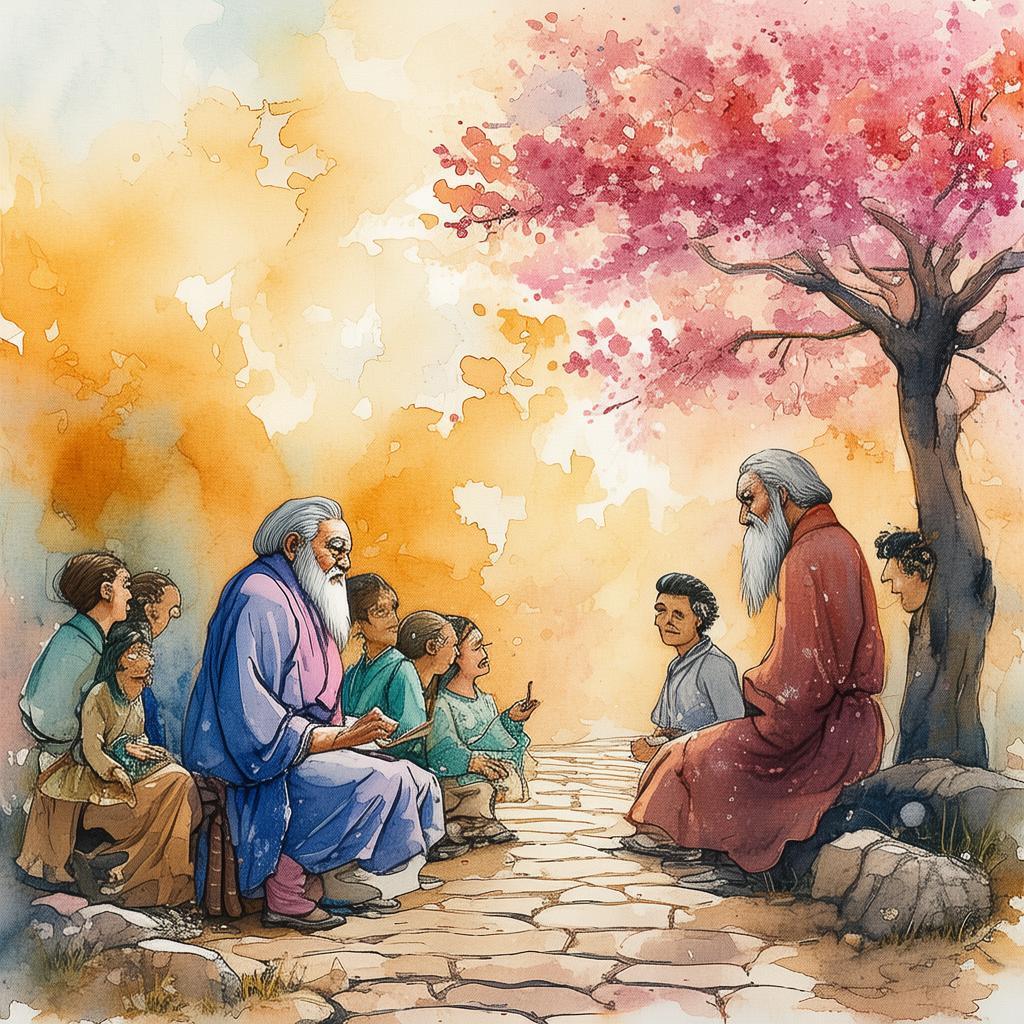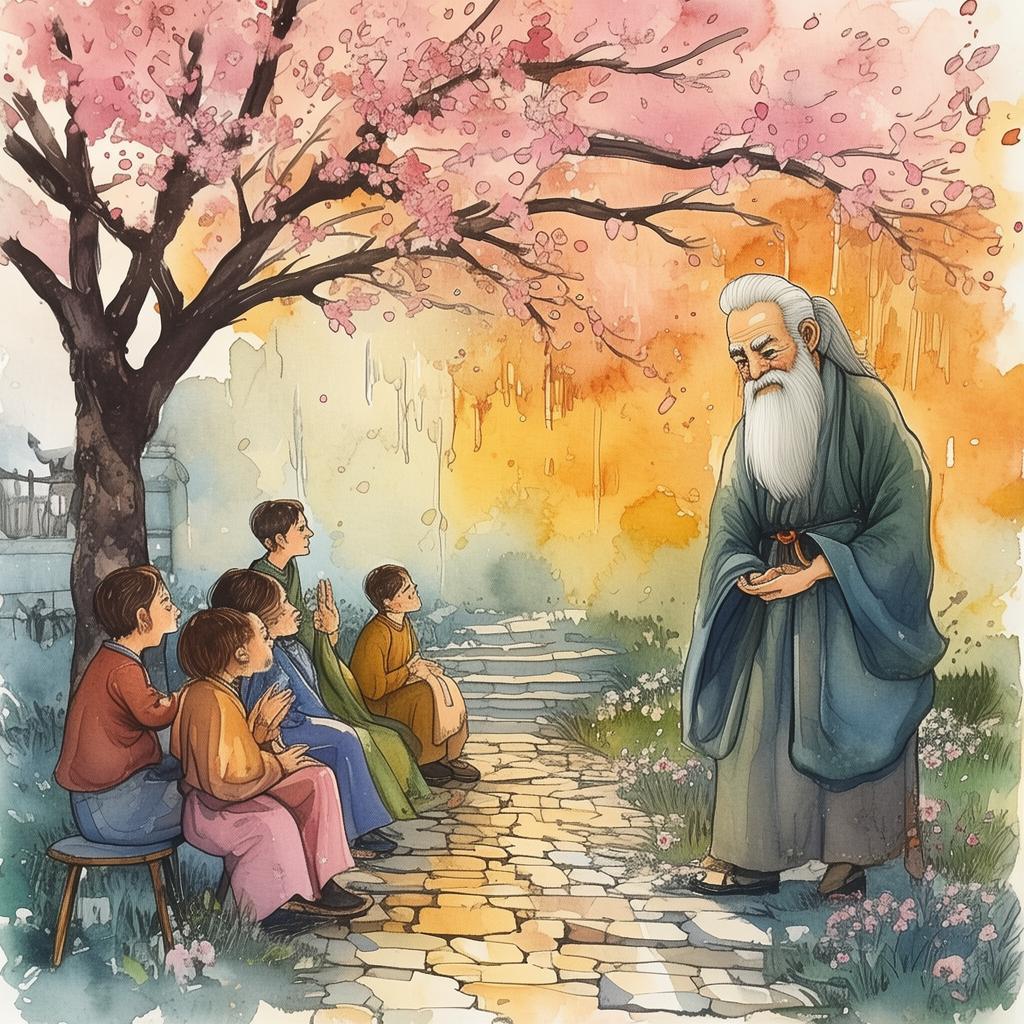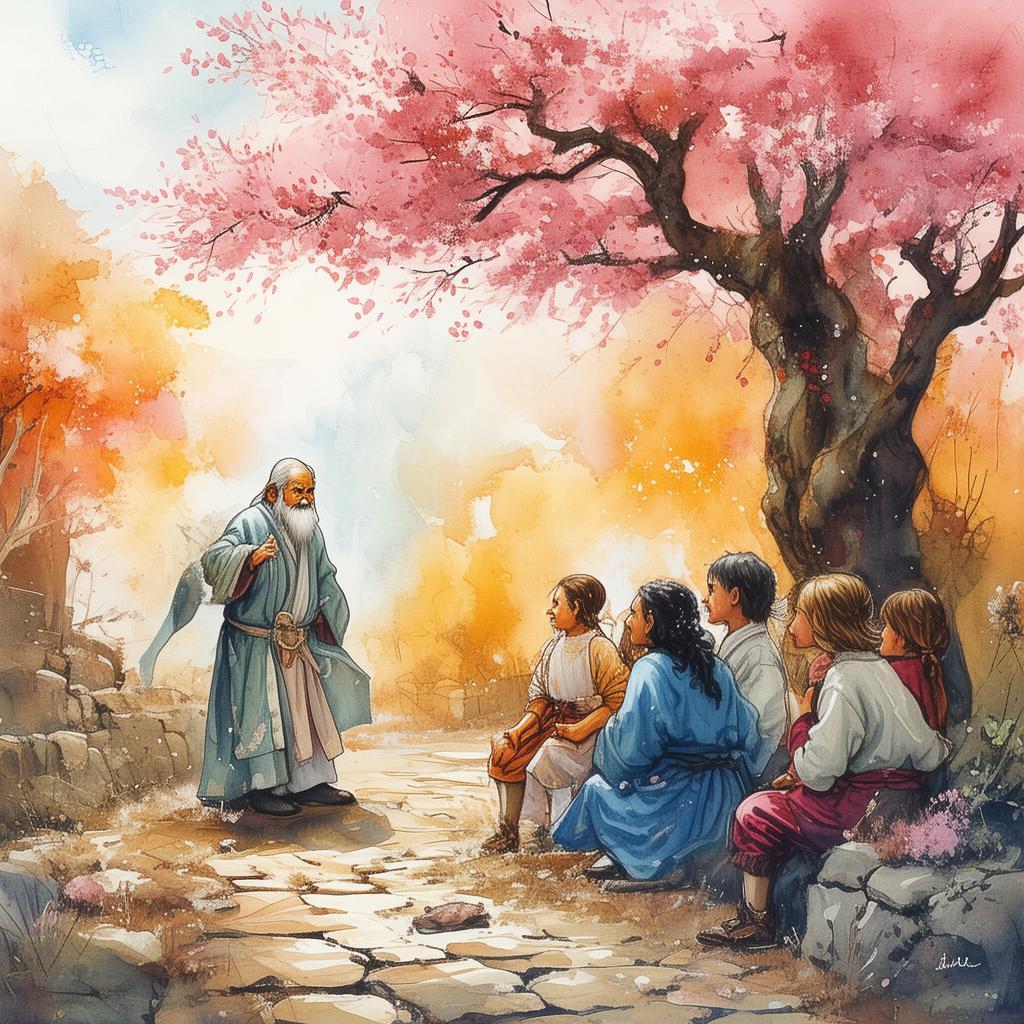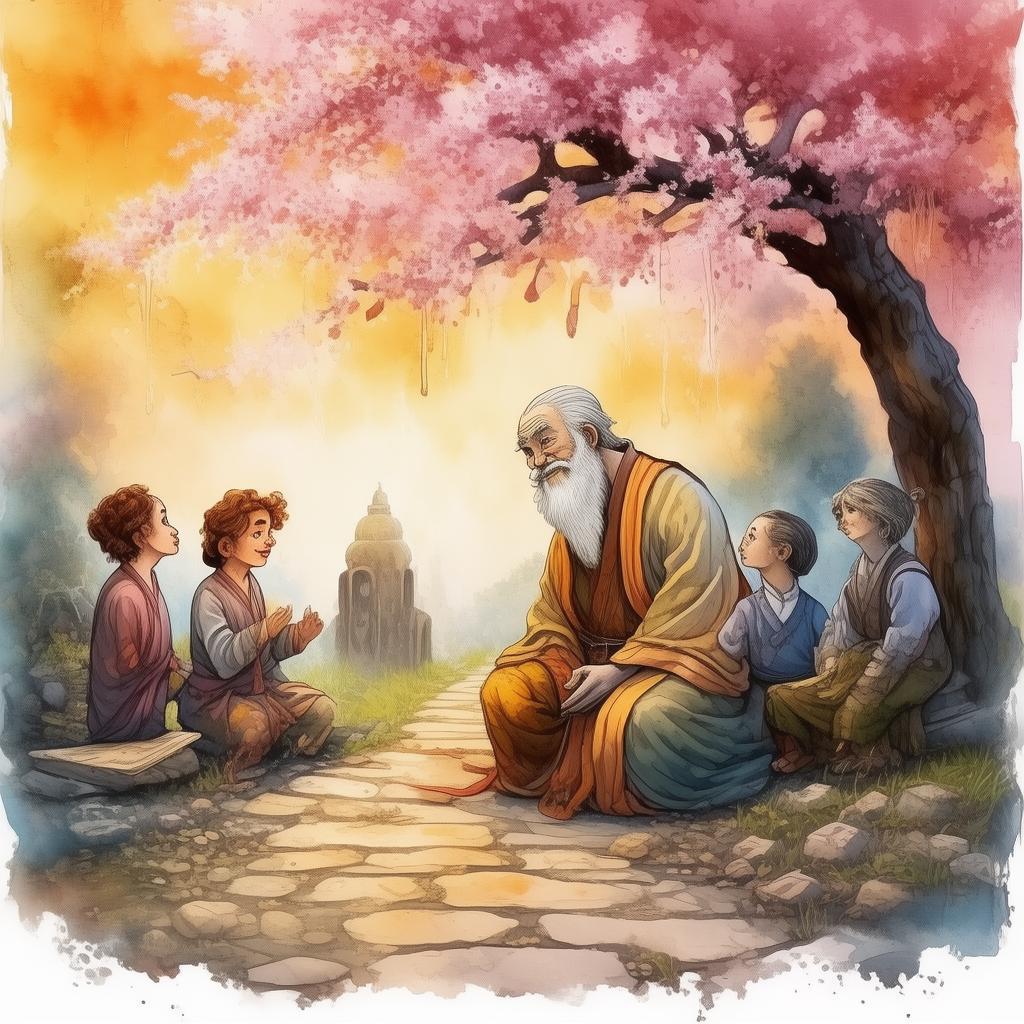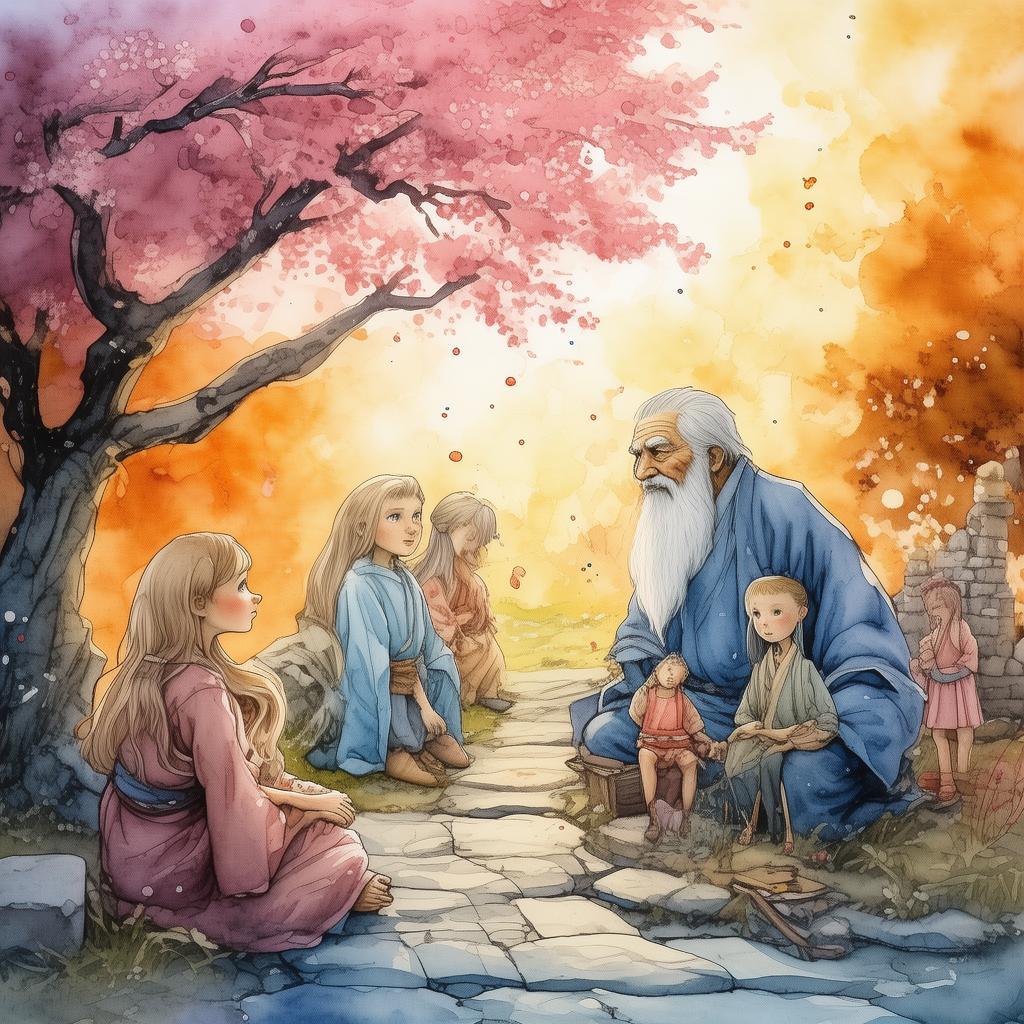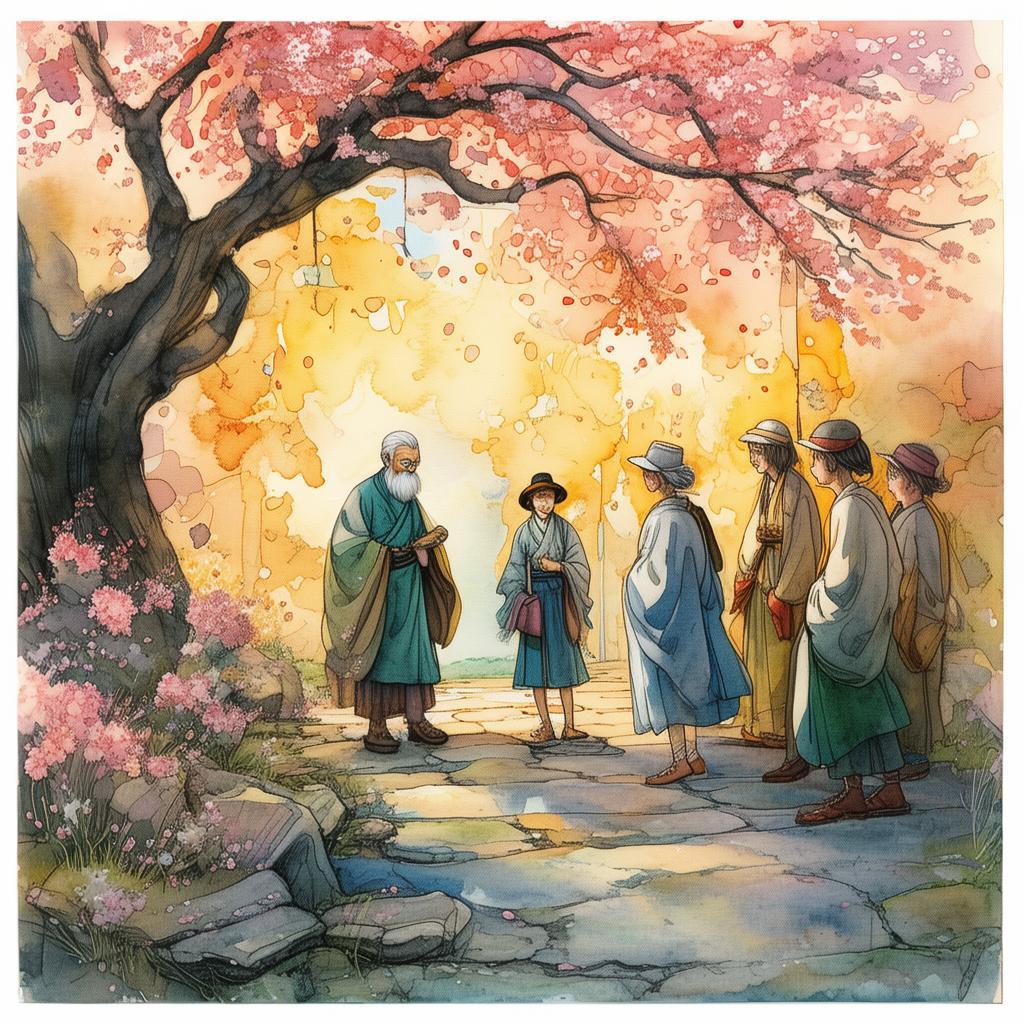Paradox of the Two Realms: The Laozi's Challenge
In the year 2145, Dr. Lin Wei, a brilliant yet reclusive physicist, had dedicated his life to unraveling the mysteries of the universe. His latest work, a theory on the interconnectedness of all realities, had brought him to the edge of a scientific breakthrough that could either revolutionize humanity or unravel the very fabric of existence.
One rainy afternoon, while working in his cluttered lab, Lin Wei stumbled upon an ancient, cryptic text that had been hidden within the walls of an old, abandoned library. The text was a portion of The Laozi, the foundational text of Taoism, but it spoke of a paradox that was entirely new—a paradox that seemed to transcend time and space.
The paradox read: "In a realm where the present is the past and the future is the present, there can be no change, for change is the essence of existence."
Lin Wei's heart raced as he realized the implications of this paradox. If this were true, then the very essence of his work, the interconnectedness of all realities, could be a paradox in itself. He had always believed that by understanding the threads that bound these realities together, he could bring peace to a chaotic world. But what if this belief was a lie?
Desperate to prove the paradox false, Lin Wei set out on a journey that would take him through two realms: the realm of his own reality, and a parallel world where time flowed in the opposite direction. In this parallel world, every action Lin Wei took would be a repetition of the past, and every decision would be a prelude to the future.
In the parallel world, Lin Wei encountered a version of himself, Dr. Wei, who was struggling with the same paradox. The two Weis engaged in a heated debate, each trying to prove their own reality was the true one. As the debate raged, Lin Wei began to notice strange anomalies around him, as if the fabric of reality was beginning to tear.
The climax of the story came when Lin Wei and Dr. Wei were forced to make a joint decision that would determine the fate of both realities. They had to choose between maintaining the status quo, which would keep the paradox in place, or to alter the course of time and risk the destruction of both worlds.
With a deep breath, Lin Wei chose to alter the course of time. He activated a device that sent ripples through the fabric of reality, causing a shift that would change the outcome of their actions. The parallel world began to unravel, and Lin Wei found himself back in his own reality, but the paradox was still unresolved.
In the aftermath, Lin Wei's work on the interconnectedness of realities had been compromised, and he was left questioning the very nature of existence. He realized that the paradox was not a flaw in his theory, but a fundamental truth about the universe. It was a reminder that existence was a delicate balance, and any attempt to alter it could have catastrophic consequences.
The story concludes with Lin Wei returning to his lab, the ancient text now open to the passage that read: "The paradox is the key to understanding the unity of all things." He looked out the window, the rain still falling, and smiled, knowing that his journey had not been in vain. He had learned that the true essence of existence was not to be found in changing the world, but in accepting it for what it was—a paradox that bound all things together.
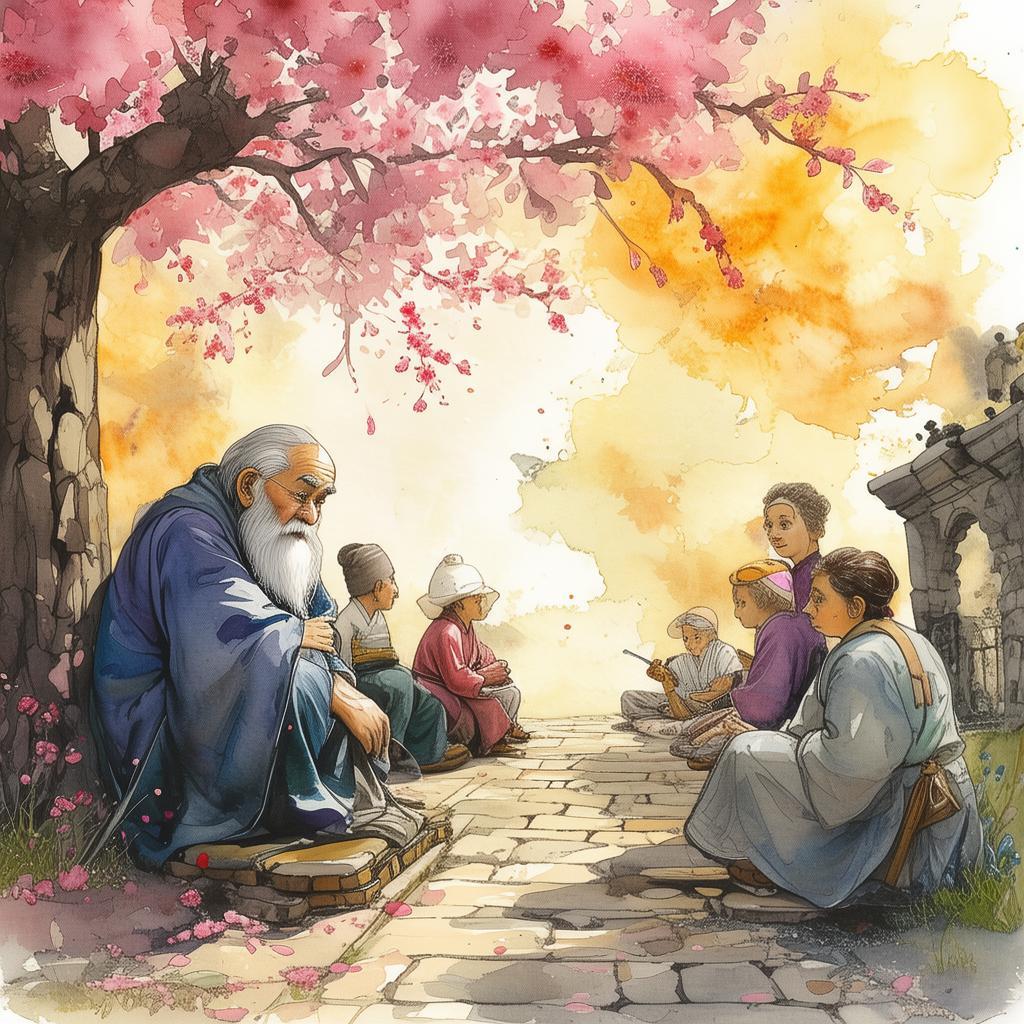
In the year 2145, Dr. Lin Wei, a brilliant physicist, discovers an ancient text that reveals a paradox that could unravel the fabric of reality. Driven by a desire to prove the paradox false, he travels to a parallel world where time flows in reverse. There, he encounters a version of himself, Dr. Wei, and they engage in a heated debate about the nature of existence.
The two Weis face a critical decision: maintain the status quo and keep the paradox in place, or alter the course of time and risk the destruction of both worlds. Lin Wei chooses to alter the course of time, but the paradox remains unresolved.
Returning to his own reality, Lin Wei questions the very essence of existence and accepts that the paradox is a fundamental truth. He concludes that the true essence of existence is to be found in accepting the paradox that binds all things together.
The story highlights the delicate balance of existence, the importance of understanding the paradoxes that shape our understanding of reality, and the courage it takes to face the unknown. It leaves readers pondering the nature of existence and the choices we make that shape our lives.
✨ Original Statement ✨
All articles published on this website (including but not limited to text, images, videos, and other content) are original or authorized for reposting and are protected by relevant laws. Without the explicit written permission of this website, no individual or organization may copy, modify, repost, or use the content for commercial purposes.
If you need to quote or cooperate, please contact this site for authorization. We reserve the right to pursue legal responsibility for any unauthorized use.
Hereby declared.
